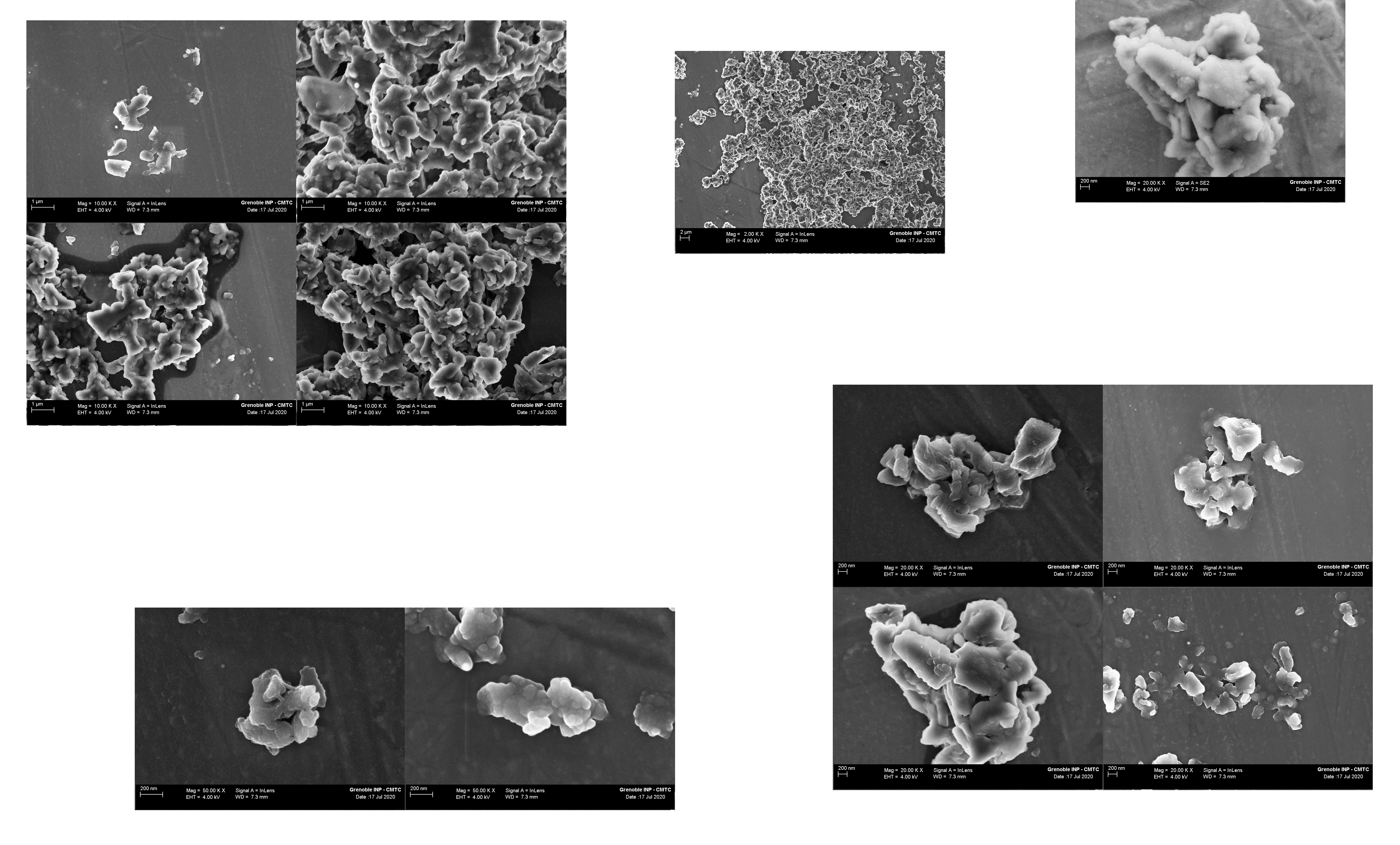Matter
- Name
- Anthracite sub-µm grains
- Family
- mineral
- Database
- Experimentalists
- Level
- local matter
- Origins
- laboratory
- Provider
- Alfa-aesar
- Preparation
- raw
- Phase type
- solid
- Component type (group)
- mineral (non-silicate mineral)
- Shape
- granular powder
- Texture
- loose granular
- Type of porosity
- particulate
- Texture
- compact
- Grain sizes
-
Grains Size min Size max Size median Size width Size mass fraction Grain shape #1 0.0 0.15 0.337 irregular #2 0.15 0.3 0.29 irregular #3 0.3 0.6 0.217 irregular #4 0.6 1.0 0.12 irregular #5 1.0 1.5 0.03 irregular #6 1.5 2.0 0.003 irregular - Size distribution
- The average grain size is 0.33 µm, and the standard deviation 0.35 µm. The size distribution of the counted grains is provided in the documentation section below.
- Size method
- Manual counting on Scanning Electron Microscopy images on sub-micrometric particles
- Title
- Ethanol wet grinded with a Retsch PM100 planetary ginder from grains smaller than 50 microns
- Matter
- Anthracite sub-µm grains (this matter)
- Processing steps
-
Step Date Type Process Changes #1 mechanical Millimetric materials are dry grinded for 20 with 15 mm ZrO2 grinding balls in a Retsch PM100 Planetary grinder . Sub-millimetric powders are produced. #1 mechanical Sub-millimetric powders are dry grinded for 20 with 2 mm ZrO2 grinding balls in a Retsch PM100 Planetary grinder . Grains smaller than 50 microns are produced. #3 mechanical Grains smaller than 50 microns are grinded for 150 minutes in ethanol with 500 microns ZrO2 grinding balls in a Retsch PM100 Planetary grinder. Sub-micrometrics grains are produces.
Produced matter
- Documentations
- Publications
